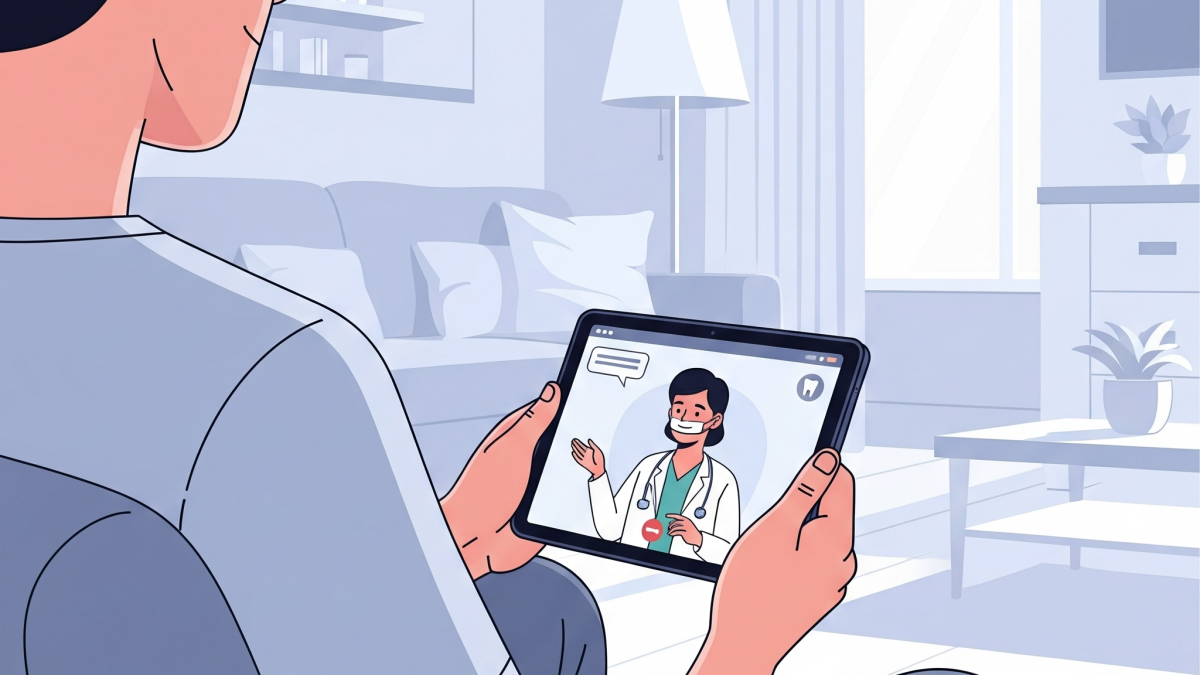- Hook: Technology has transformed various healthcare fields, and dentistry is no exception. Teledentistry is emerging as a powerful tool to democratize access and optimize oral care.
- Acknowledge: More than just a temporary solution, teledentistry is establishing itself as a valuable component of modern dental practice.
- Post’s Purpose: This guide will explore what teledentistry is, how it works, its numerous benefits for patients and professionals, and important considerations for making the most of this innovation.
What is Teledentistry? Connecting Patients and Dentists Remotely
- Definition: The use of information and communication technologies (ICTs) to provide dental healthcare services remotely.
- Key Modalities:
- Synchronous (Real-time): Consultations via video call, where patient and dentist interact live. Ideal for triage, follow-up, and answering questions.
- Asynchronous (Store-and-Forward): Patient sends photos, videos, X-rays, and history for the dentist to review later and provide an opinion. Useful for second opinions, initial assessments.
- Remote Monitoring: Use of devices or apps to track hygiene or treatment progress (e.g., orthodontic aligners).
How Teledentistry Works in Practice
- Secure Platforms: Use of encrypted software and applications that ensure the privacy of patient information.
- Necessary Equipment: Smartphone, tablet, or computer with camera and microphone, good internet connection.
- Typical Consultation Process:
- Online scheduling.
- Pre-submission of information (history, photos).
- Video call with the dentist.
- Discussion of symptoms, visual assessment (if possible), guidance.
- Treatment plan or referral for an in-person consultation.
Benefits of Teledentistry: Enhanced Access and Convenience
- Increased Access to Oral Healthcare:
- For patients in rural areas or with limited access to clinics.
- For individuals with reduced mobility or disabilities.
- For those with busy schedules.
- Convenience and Time Savings:
- Avoids travel and waiting times.
- Consultations can be done from the comfort of home or work.
- Triage and Initial Guidance:
- Allows assessment of urgency, guidance on first aid.
- Reduces unnecessary emergency room visits.
- Treatment Follow-up:
- Monitor orthodontic progress, post-operative care, etc.
- Education and Prevention:
- Facilitates guidance on oral hygiene and healthy habits.
- Potential Cost Reduction: Less travel, optimized professional time.
Limitations and Important Considerations
- Does Not Replace In-Person Consultation: Teledentistry is a complement, not a substitute for detailed clinical exams, X-rays, and invasive procedures.
- Need for Physical Examinations: Many conditions require direct touch and visualization.
- Data Privacy and Security: The importance of using secure platforms compliant with data protection laws.
- Technological Limitations: Internet quality, patient equipment.
- Regulation: Keep up with the guidelines of dental boards in each region.
- Summary: Teledentistry is an innovative tool that expands the reach of dentistry, offering convenience and access to important oral care.
- Reiterate: While it doesn’t replace in-person consultation, it’s a valuable resource for triage, guidance, follow-up, and education.
- Empower: Embrace the digital revolution in oral healthcare for more efficient and accessible care.
Related posts
Meet the Author
Welcome to OdontoBlog, your essential source for current dental news and tips. Our goal is to simplify oral health, offering accurate and accessible information.
Popular Posts
Subscribe Now
* You will receive the latest news and updates on your favorite celebrities!


